
Author's Note: For more than 100 years, Godfrey's Pond, located in northeast Genesee County, has been a recreation spot for some local residents. Swimming, boating, fishing, picnicking, camping, and gun sports have been enjoyed there and still bring lasting happy memories to those who were able to enjoy them. I will be writing a two-part article on “The Pond, “ with Part 1 detailing its history and Part 2 describing my childhood memories of the adventures I had there when I was a kid in the 1950s and 1960s.
Pond Origins
Between Route 5 and Route 33 to the east of Batavia is an area known as Seven Springs. Underground springs there bubble to the surface and form what is known as Bigelow Creek. The terrain is downhill to the northeast, and so that is the direction the creek flows. Over the last couple hundred years, entrepreneurs took advantage of the flowing water by constructing dams at several different locations on the creek to use the water power for the milling of various products.

The first dam is directly at Seven Springs and formed what is now known as Chapin Pond. At one time used for milling flour, the pond is now part of a Zen community area called Chapin Mill Retreat Center. Coincidentally, when I was born in January 1947, my parents were renting the old mill building, which had been converted into living quarters. My mom frequently and nostalgically recalled her early married days after my dad came home from World War II at the quiet and peaceful “Mill.”

Horseshoe Lake
From Seven Springs, Bigelow Creek flows in an easterly direction still north of Route 33. In the late 1800s, a man named Robert Fisher dammed the creek to build a mill. But in 1897, the property was sold to Charles Hodges, who constructed a much higher dam resulting in what he named Horseshoe Lake. Various entrepreneurs attempted in the early 1900s to make the lake into a summer resort. A baseball diamond was laid out, boats were purchased, a merry-go-round and roller coaster were installed, and a bath house was built, but due to lack of transportation to such a rural area, it only prospered for a short time. By the 1950s, Horseshoe became a quiet residential lake, which pretty much it remains to this day.
Godfrey's Beginnings
Bigelow Creek outflows from Horseshoe Lake and heads northeast passing beneath Route 33. It forms a boggy wetland area several miles north, and previous to 1832, Elijah Godfrey purchased the area and built a small dam for the purpose of sawing lumber and grinding feed, and the resulting pond got its name from him, which it still bears today.
In 1851 Norris Haywood bought the land and pond, and during his ownership, the New York Central made a deal for a right of way and put through their tracks, which separated the property into two sections. The current mainline of the CSX Railroad still goes by the pond. A cement culvert was built below the railroad tracks to allow the water to pass through from the south end of the property to the north, where the pond is located.
In 1874 Thomas Dobney took control of the property and began using the water mill for grinding plaster brought from Byron which was used for fertilizer. In 1890, Joseph Bork, a real estate man from Buffalo, purchased the property to start a resort. He planned to construct a dance hall and have tennis courts and a baseball field. He also brought in row boats. However, like Horseshoe Lake, the plan failed due to lack of transportation to the site.
The property was sold to the New York Central Railroad in 1900, and they raised and rebuilt the dam, which added 14 million gallons of more water. However, in 1902 a flood destroyed the dam and completely emptied the pond. The railroad built a new dam of concrete, and the pond was refilled. However, the New York Central did not take water directly from the pond but rather ran a sluice to South Byron, where the trains took on the water. The mill continued to be leased to various businessmen to grind feed.
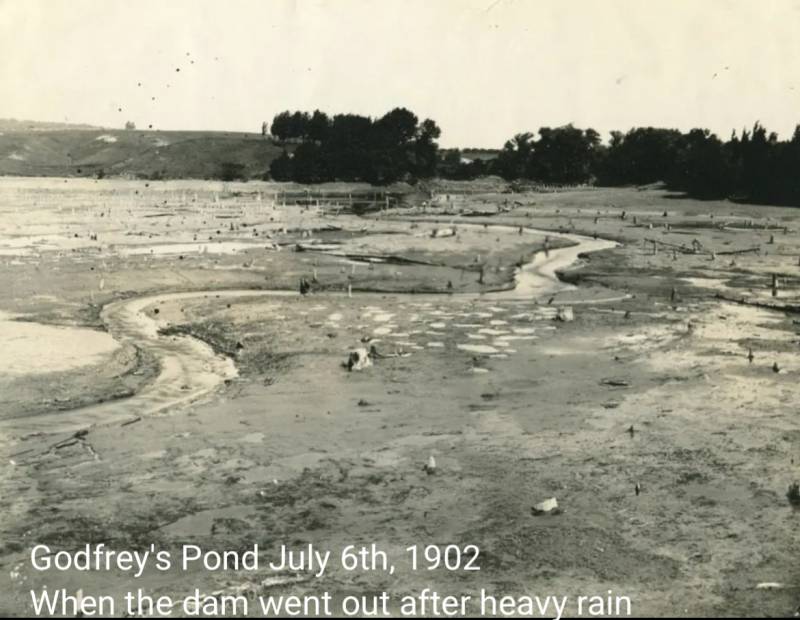
Recreation Area Finally Becomes A Reality
In 1909 a group called the Genesee County Fish and Game Protective Association leased the Godfrey's Pond property from the New York Central, which was no longer using it. Their intention was to have a club with dues-paying members who would use the area for recreational (fishing, hunting, etc.) purposes. The organization made some improvements to the rented area, including planting thousands of trees, and people began to join and enjoy the rural pond locale.
Twenty-two years later, in 1931, the Fish and Game Association purchased the land and pond outright from the Railroad for $4,750. The total property equaled 100 acres, 50 of which were taken up by the pond. The purchase was negotiated by Assemblyman Charles Miller along with Arnold Keller, William Phillips, and Porter Davis, who were officers of the Fish and Game Association.
At the top of a hill overlooking the pond was a house that the Association designated as the residence of the property caretaker and his family. The very first caretaker was Joseph Morith, and another well-known one was Jerry Ruckle.
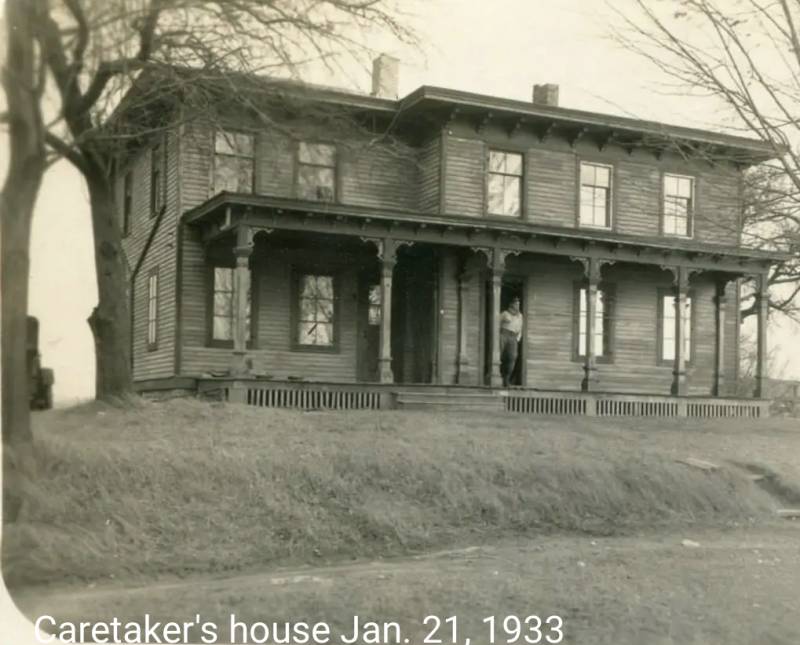
Through the years up until the 1950s and '60s, members and their guests had a lot of opportunities for recreational fun. For swimming, there was a shallow section with a sand beach at the southeast end near the railroad. Families with small children tended to congregate in that area, and the Association hired lifeguards for safety. At the north end was a deeper area, and through the years, a cement deck was installed and low, medium, and high diving boards were placed there. A floating raft was installed each summer about 25 yards out for swimmers to use. Swimming lessons were offered, and of course, lifeguards were on duty there too.
Not far from “the deep end “ was a building that tripled as a bathhouse for changing, a refreshment stand (popsicles, ice cream, chips, candy, etc.), and a recreation room (ping pong and so on). This is where members registered their guests after paying a small fee.
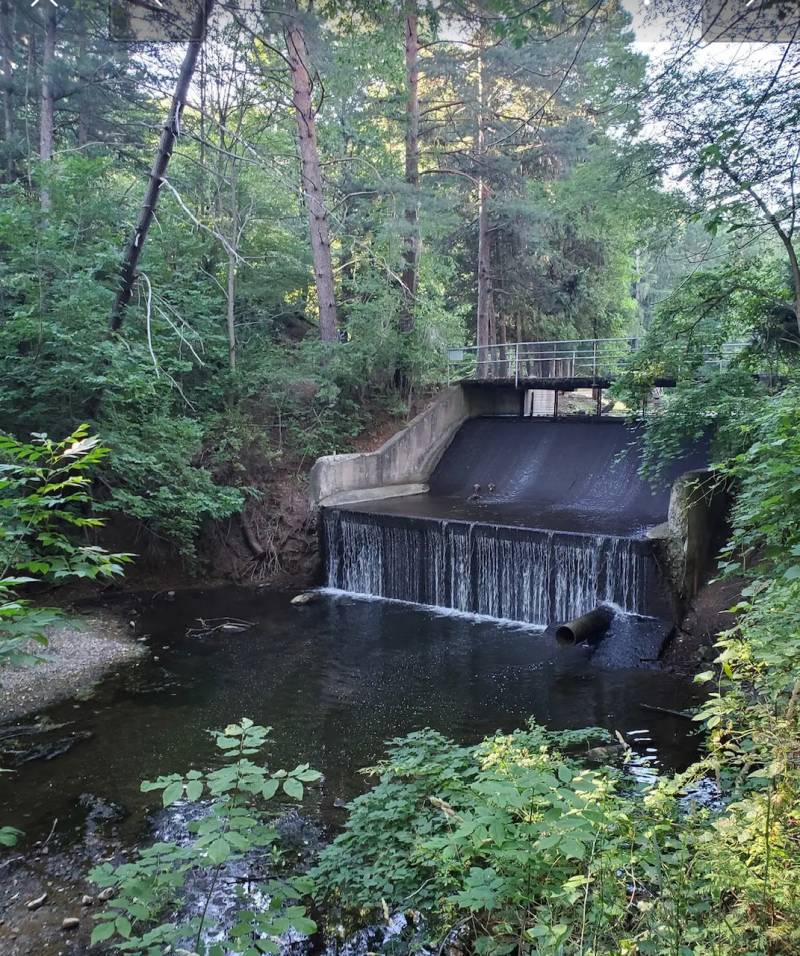
Just to the east of the “deep end “ were docks with rowboats available for boating or fishing. No motors were allowed. In the very early days, the Association tried to raise trout, but the water was too warm. So the pond became a fishery for sunfish, perch, largemouth bass, and northern pike. From time to time, various fishing contests were held. To the west of the swimming area was the dam, and below that, the water flow became faster as it reformed into Bigelow Creek (note: through all these years, I never knew the name of the creek until I did research for this article), which eventually empties into Black Creek which then flows into the Genesee River at Scottsville and then on to Lake Ontario.
Throughout the property, there were several shelters available to reserve for family outings and many fireplaces and picnic tables. Camping was also permitted in a couple of separate areas.
Near the railroad and to the southeast of the beach area (everyone called it “the shallow end”) was a shooting range where gun enthusiast members could practice their marksmanship.
Major Additions and Changes
Since 1970 the Genesee County Fish and Game Protective Association has been busy adding more attractions for its members to enjoy. Thanks to the inspiration of James Southall, an aviary was constructed below the dam and north of Bigelow Creek. It features a display of ornamental pheasants, waterfowl, quail, partridge, peacocks and swans. Participating members hatch and raise their own birds and sell some to offset operating expenses. Each fall, pheasants are released in an adjoining property for hunting by members.
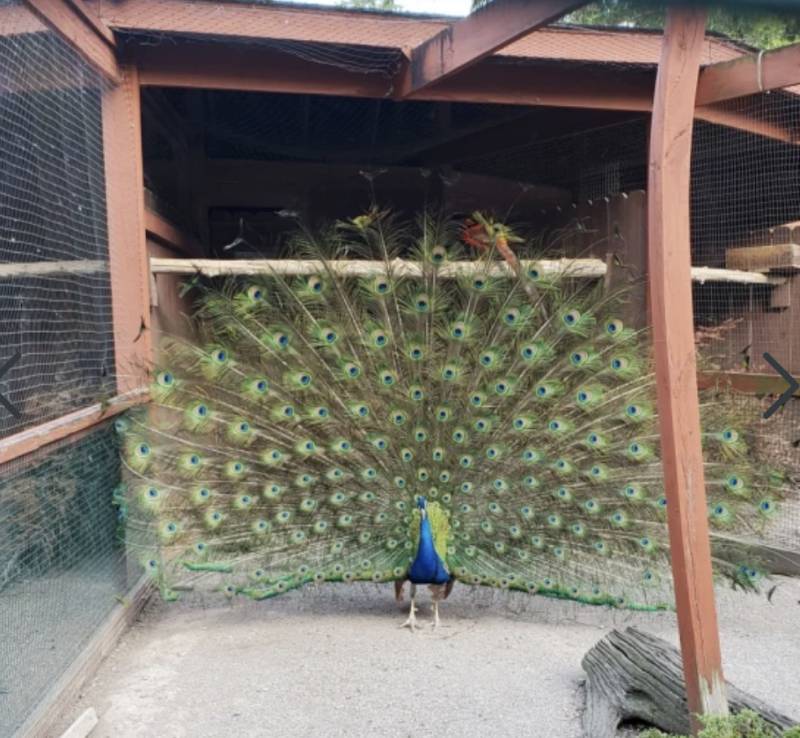
In 2004 to the north of the aviary, a four-acre trout pond was dug and filled. There is a hatchery, display pool, and raceways for the young fish and breeders, which are then used to stock the pond. The trout are Rainbows and Palominos, which are a mixture of rainbows and goldens. Members are allowed to keep 20 trout per year, but most practice catch and release.
Off to the east, there is a trap shooting range where shotgun enthusiasts can shoot clay birds and past that is an area of archery targets where bow and arrow users can practice their skills. There is also a safe one-way archery trail for practicing which begins near the aviary and ends near what is referred to as the “Back Pond.”

For hikers and exercisers, there are seven trails of varying lengths that intersect and which total about five miles in all.
There are two separate camping areas for members to use with RVS and/or tents.
An unfortunate change happened in 2018. Members were complaining about a greenish color to the water, and through testing, it was discovered that the pond was too contaminated for swimming. Trying to chlorinate such a large body of water was not feasible for a number of reasons. A weed harvester was installed, and oxygen bubblers were added to ensure that the fish population was kept healthy and abundant. But, it was a no-go for humans.
Members and their leadership met and decided that some type of swimming availability was a must for the survival of the facility. The club decided to spend around $300,000 to build a pool near where the caretaker's house was. The funds to pay for the swimming area were projected to come from increased camping and group events that the pool would provide.
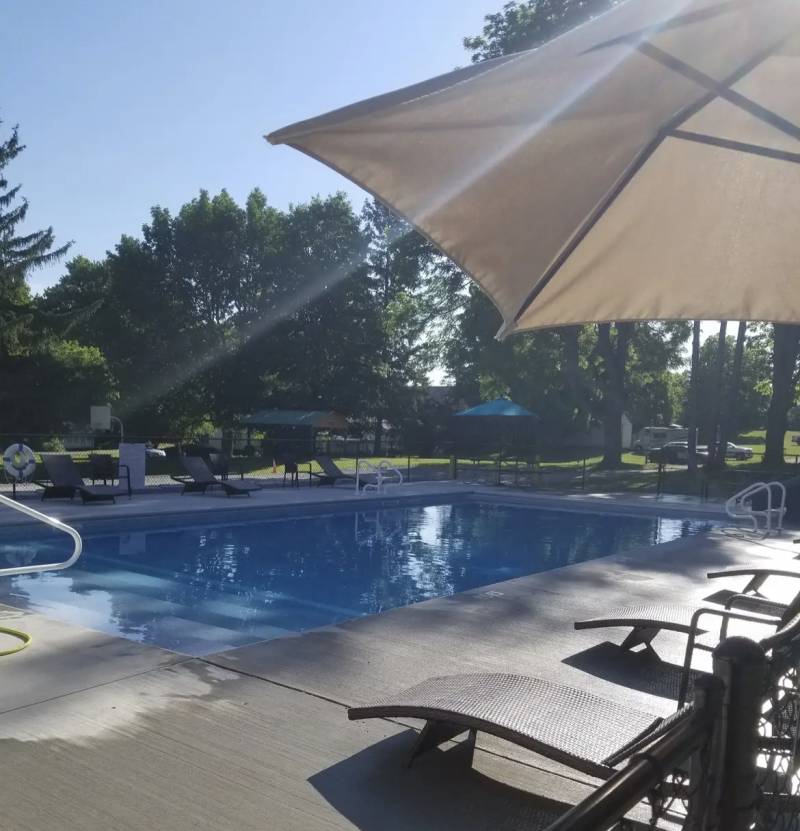
Students from BOCES worked to remove trees and stumps, and many members who had trade skills volunteered to help out at no charge. The pool opened in 2019 and has been a big success, although many older members sadly reminisce about their days swimming and learning to swim in the actual pond.
Godfrey's Pond now has about 1,600 members and continues to thrive as an active outdoor recreation spot in Genesee County, New York.
Photos courtesy of Godfrey's Pond and Ed Kademon, submitted by David Reilly.
